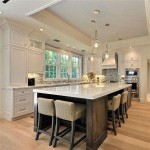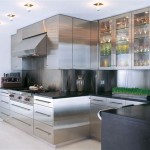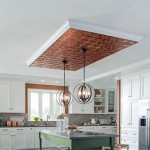Placement Of Kitchen Cabinet Knobs: A Comprehensive Guide
The placement of knobs on kitchen cabinets is a seemingly minor detail that significantly impacts both the aesthetic appeal and functionality of a kitchen space. Optimal knob placement ensures comfortable usability, prevents undue wear and tear on cabinet doors and frames, and contributes to the overall design harmony of the kitchen. This article provides a comprehensive guide to determining the most appropriate placement for kitchen cabinet knobs, considering various factors and design principles.
The selection of cabinet hardware is a multifaceted process. Beyond the finish and style of the knob itself, successful placement is paramount. Poorly positioned knobs can lead to awkward reaching, uneven weight distribution on the doors, and a visually unbalanced appearance. Therefore, careful planning and precise execution are essential for achieving a well-designed and functional kitchen.
Understanding the Basics of Cabinet Anatomy
Before delving into specific placement guidelines, it's crucial to understand the basic anatomy of a kitchen cabinet. Cabinets are typically categorized as either upper (wall-mounted) or lower (base) cabinets. Doors can be full overlay, partial overlay, or inset, each influencing the visible frame surrounding the door itself. Drawers, a component of lower cabinets, also require knob placement consideration. Understanding these distinctions is critical for determining the appropriate location for knobs.
Full overlay doors completely cover the cabinet frame, providing a cleaner, more modern look. Partial overlay doors, conversely, leave a portion of the frame visible, often lending a more traditional aesthetic. Inset doors are flush with the surrounding frame, creating a streamlined appearance. The type of overlay will dictate how much space is available on the cabinet door for knob placement and influence the visual impact of the chosen location.
Drawers, unlike doors, present a single surface for knob placement. The size and shape of the drawer front, along with the overall style of the kitchen, will influence the optimal positioning of the knob. Wider drawers may benefit from two knobs, while narrow drawers can generally accommodate a single knob.
Key Principles for Knob Placement on Doors
Several guiding principles can assist in determining the ideal knob placement on cabinet doors. These principles aim to strike a balance between aesthetics, functionality, and ease of use.
Consistency: Maintaining a consistent placement for knobs across all cabinets is crucial for visual harmony. This includes both height and distance from the edge of the door. While minor variations may be necessary to accommodate different door sizes, striving for overall consistency will create a cohesive and balanced look.
Accessibility: Knobs should be placed in a location that is easily accessible for users of varying heights and physical abilities. Avoid placing knobs too high or too low, as this can make them difficult to reach and potentially lead to strain or discomfort.
Proportionality: The size and style of the knob should be proportionate to the size of the cabinet door. A small, dainty knob may look lost on a large cabinet door, while an oversized knob may overwhelm a small cabinet. Consider the overall scale of the kitchen and choose knobs that are appropriately sized.
Door Swing: Consider the direction in which the cabinet door swings. Placing the knob on the side of the door opposite the hinges is generally the most logical and ergonomic choice. This allows for easy opening and closing of the door with minimal effort.
Avoiding Obstructions: Ensure that the knob placement does not interfere with any other elements of the kitchen, such as countertops, appliances, or adjacent cabinets. Consider the clearance required for opening and closing the door and adjust the knob placement accordingly.
For standard-sized upper cabinets, a common guideline is to place the knob 2-3 inches from the bottom corner of the door, on the side opposite the hinges. For lower cabinets, the knob is typically placed 2-3 inches from the top corner of the door, again on the side opposite the hinges. These measurements provide a starting point, but may need to be adjusted based on individual preferences and specific cabinet dimensions.
Guidelines for Drawer Knob Placement
Placement of knobs on drawers is slightly different than on cabinet doors, primarily due to the single surface present. Symmetry and ease of use are paramount when determining drawer knob placement.
Centering: For drawers that are relatively narrow, the knob should be placed in the center of the drawer front, both horizontally and vertically. This creates a balanced and symmetrical appearance.
Proportional Spacing: On wider drawers, using two knobs is often preferred for both aesthetic and functional reasons. In this case, the knobs should be placed equidistant from the center of the drawer and from the edges. This provides a balanced look and distributes the pulling force evenly across the drawer front.
Height Positioning: When placing a single knob on a drawer, consider the height of the drawer front. For taller drawers, placing the knob slightly higher than the vertical center can provide better leverage and ease of use. Conversely, for shorter drawers, placing the knob at the vertical center is generally appropriate.
Consistent Height: Maintain a consistent vertical placement for knobs across all drawers, regardless of their width. This creates a sense of order and visual harmony in the kitchen. If using two knobs on wider drawers, ensure that they are positioned at the same height as the single knobs on narrower drawers.
As a general rule, for drawers that are less than 24 inches wide, a single centered knob is sufficient. For drawers between 24 and 36 inches wide, consider using two knobs, spaced approximately one-third of the drawer width from each edge. For drawers wider than 36 inches, two knobs are highly recommended to prevent racking or warping of the drawer front.
Practical Considerations and Installation Tips
Once the ideal knob placement has been determined, careful execution is essential for achieving professional results. Accurate measurements, proper tools, and attention to detail are crucial for a successful installation.
Accurate Measurements: Use a measuring tape or ruler to precisely mark the desired location for each knob. Double-check the measurements to ensure consistency and accuracy. Consider creating a template to ensure uniform placement across multiple cabinets and drawers. These templates can be made from cardboard or thin wood and will help save time and minimize errors.
Pilot Holes: Before installing the knobs, drill pilot holes at the marked locations. This will prevent the wood from splitting and make it easier to insert the screws. Use a drill bit that is slightly smaller than the diameter of the screw being used.
Proper Screws: Use screws that are the appropriate length for the thickness of the cabinet door or drawer front. Screws that are too long can protrude through the back of the cabinet, while screws that are too short may not provide adequate holding power.
Tightening: Tighten the screws securely, but avoid over-tightening, as this can damage the cabinet door or drawer front. Use a screwdriver that is appropriately sized for the screw head to prevent stripping.
Leveling: Ensure that the knobs are installed straight and level. Use a level to check the alignment of each knob and make any necessary adjustments before fully tightening the screws.
Protecting Surfaces: Use painter's tape to protect the cabinet surfaces from scratches or damage during installation. Place the tape around the marked locations before drilling the pilot holes.
By adhering to these practical considerations, homeowners can ensure that their kitchen cabinet knob installation is both aesthetically pleasing and functionally sound. The proper placement of knobs contributes significantly to the overall appeal and usability of a kitchen, making it a worthwhile investment of time and effort.

The Ultimate Guide For Cabinet Hardware Placement And Sizing Kitchen Inspiration Design

Cabinet Hardware Placement Guide

Where To Place Cabinet Hardware Emtek Living Blog

Design 101 Cabinet Hardware Placement Lark Linen

How To Place Cabinet Knobs Pulls

A Designer S Guide To Hardware Placement Kitchen Cabinets Knobs And Pulls Trends

A Simple Guide For Ideal Cabinet Knob Placement

Pontis Construction On Linkedin Tips For Cabinet Hardware Placement Knobs Are Placed Opposite Of

Design 101 Cabinet Hardware Placement Lark Linen

The Ultimate Guide For Cabinet Hardware Placement And Sizing Kitchen Remodel Inspiration Design








